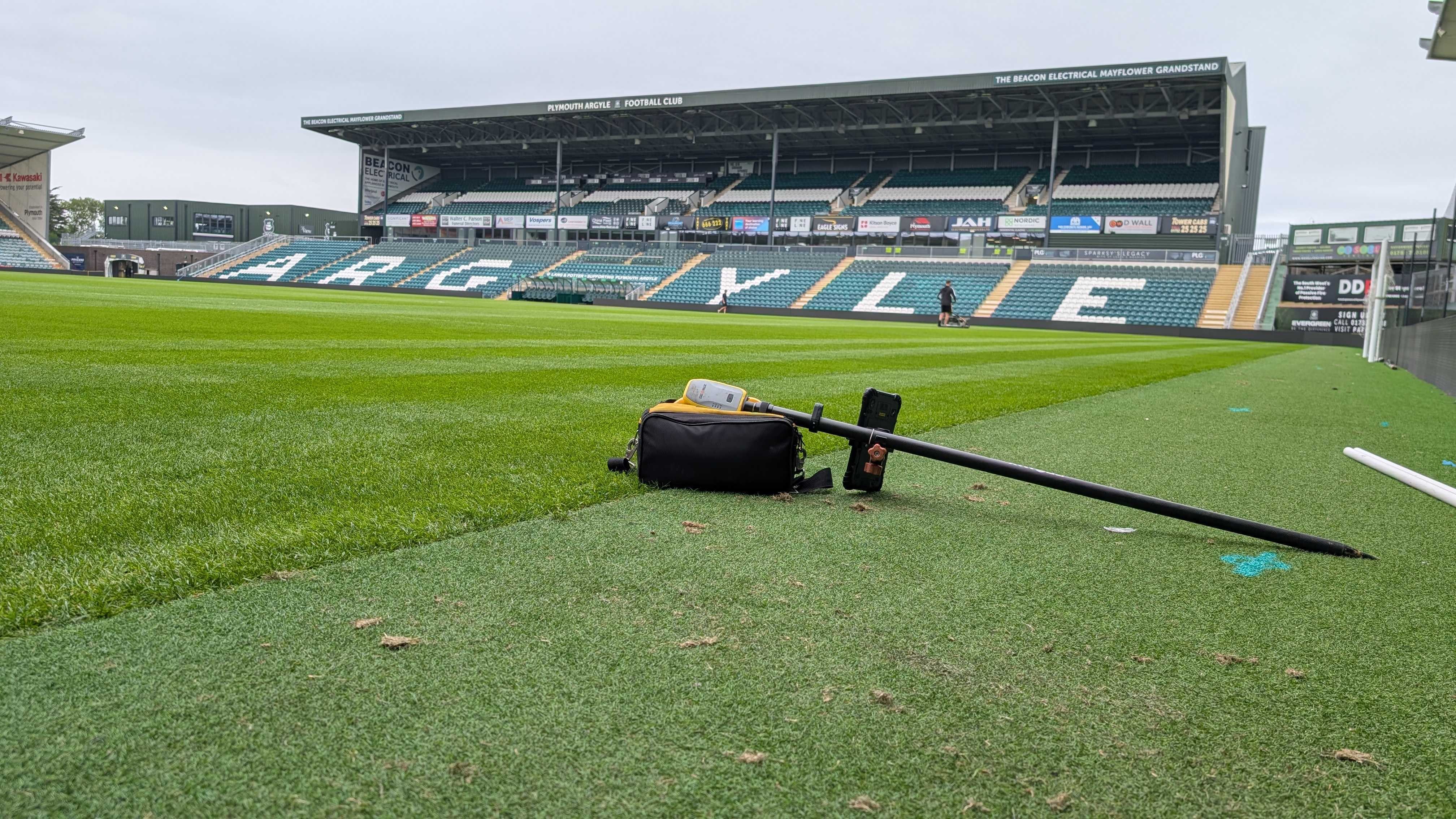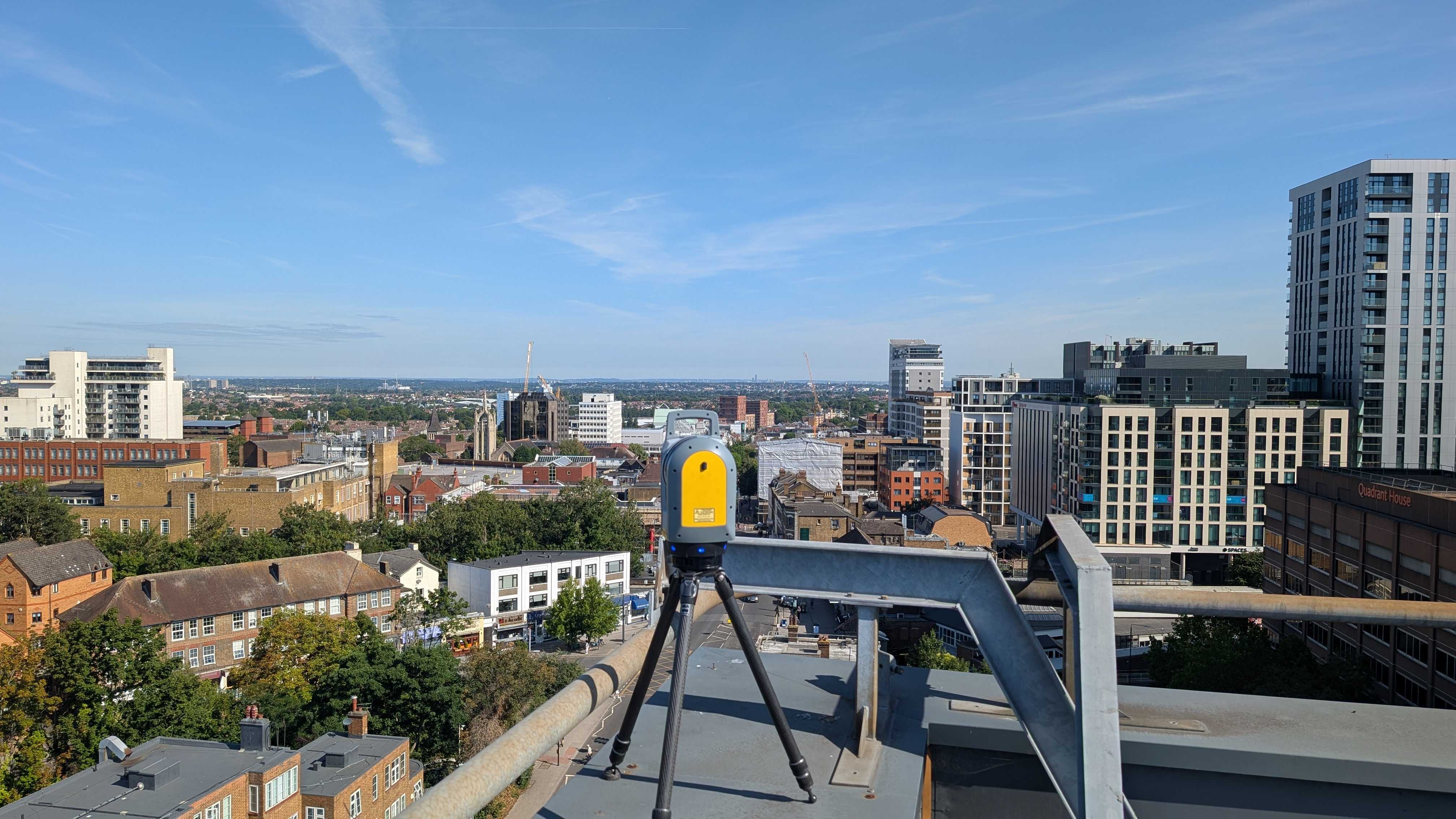As construction projects grow in complexity and scale, the demand for advanced monitoring solutions has never been greater.
Traditional monitoring methods, while foundational, often fall short in providing the comprehensive, accurate data necessary for ensuring structural integrity.
Cutting-edge survey equipment and methods are now revolutionising the field, offering unprecedented levels of detail and accuracy.
This blog delves into these advancements, showcasing how state-of-the-art technologies enhance structural monitoring, providing data that informs better decision-making and ensures the longevity and safety of structures.
Traditional Survey Methods: What They’re Missing
Despite their historical significance, traditional structural monitoring methods often show several limitations that hinder their effectiveness in modern construction projects. Understanding these pain points underscores the need for advanced monitoring solutions.
Concerns About Accuracy and Reliability
Traditional monitoring techniques, such as manual surveying and basic instrumentation, can lack the precision required for high-stakes construction projects. Factors such as human error, environmental conditions, and equipment limitations can compromise the accuracy of the collected data. For instance, manual readings taken at infrequent intervals may miss critical changes in structural behaviour, leading to an incomplete understanding of the structure’s health.
Limitations in Comprehensive Data Collection
Traditional methods often provide only a fragmented view of structural performance. They typically focus on a limited number of parameters and may not capture the full scope of the structure's dynamic behaviour. This approach can result in an incomplete assessment, where subtle yet significant changes go undetected.
Gap in Awareness About New Technologies
There is often a lack of awareness or understanding about the latest advancements in structural monitoring technologies. This gap can lead to reliance on outdated methods, despite the availability of more effective solutions.
State-of-the-Art Survey Instruments And Advanced Survey Methods
The evolution of structural monitoring introduced an array of sophisticated survey instruments and methods designed to address the limitations of traditional techniques.
So, what are the State-of-the-Art Survey instruments used?
Total Stations
Total stations are integral to modern surveying, combining electronic distance measurement (EDM) and angular measurement capabilities. These instruments offer high precision and are essential for monitoring deformation and displacement in structures.
Laser Scanners
Laser scanners capture detailed 3D models of structures, providing a comprehensive view of their current state. By emitting laser beams and measuring the time taken for them to return, these devices create precise point clouds that represent the structure's surface.
GPS Systems
Global Positioning System (GPS) technologies have revolutionised real-time structural monitoring, especially for large-scale projects. Real-time kinematic (RTK) solutions offer centimetre-level precision, making them ideal for tracking movements and deformations over extensive areas.
Alongside this, advanced survey methods are used to ensure the data is worked through efficiently. Here are some of those methods:
- Automated Monitoring Systems
- Deformation Monitoring Techniques
- Vibration Analysis
- Benefits of Advanced Technologies
- Improved Accuracy
- Reliability of Data
- Comprehensive Monitoring
By leveraging these state-of-the-art survey instruments and advanced methods, construction projects can achieve higher levels of accuracy, reliability, and efficiency in structural monitoring.
How does this benefit a project overall?
Benefits Of Advanced Technologies
First and foremost, the accuracy of data collection is significantly enhanced. The heightened precision that advanced technology provides ensures that potential issues are identified early, allowing for timely interventions that prevent minor problems from escalating into major failures.
In addition to improved accuracy, the reliability of data collected through advanced technologies is unbeaten. Automated monitoring systems and continuous data findings eliminate the inconsistencies and human errors associated with manual methods.
Furthermore, these advanced technologies lead to substantial cost savings and efficiency improvements. Early detection of structural issues through precise and reliable monitoring can prevent costly emergency repairs and unplanned maintenance.
By adopting these technologies, construction professionals can ensure the long-term stability and safety of their structures.
Conclusion
At Intersect Surveys, we leverage advanced structural monitoring solutions to enhance the accuracy, reliability, and comprehensiveness of our clients' projects.
By utilising state-of-the-art survey instruments and methods, we ensure early detection of potential issues, optimise resource allocation, and ultimately safeguard the integrity and longevity of structures.
Our commitment to cutting-edge technology empowers clients to make informed decisions, resulting in safer, more efficient, and cost-effective construction projects.
Get in touch today to get a quote from us within 24 hours!
FAQs
Why are traditional structural monitoring methods considered insufficient for modern construction projects?
Traditional monitoring methods often lack the precision required for complex construction projects due to factors like human error, environmental conditions, and equipment limitations.
What are some examples of state-of-the-art survey instruments used in modern structural monitoring?
Modern structural monitoring utilises advanced survey instruments such as:
Total Stations
Laser Scanners
GPS Systems
How do advanced structural monitoring technologies benefit construction projects overall?
Advanced monitoring technologies significantly enhance data accuracy and reliability. They enable early detection of potential structural issues, preventing minor problems from becoming major failures.








